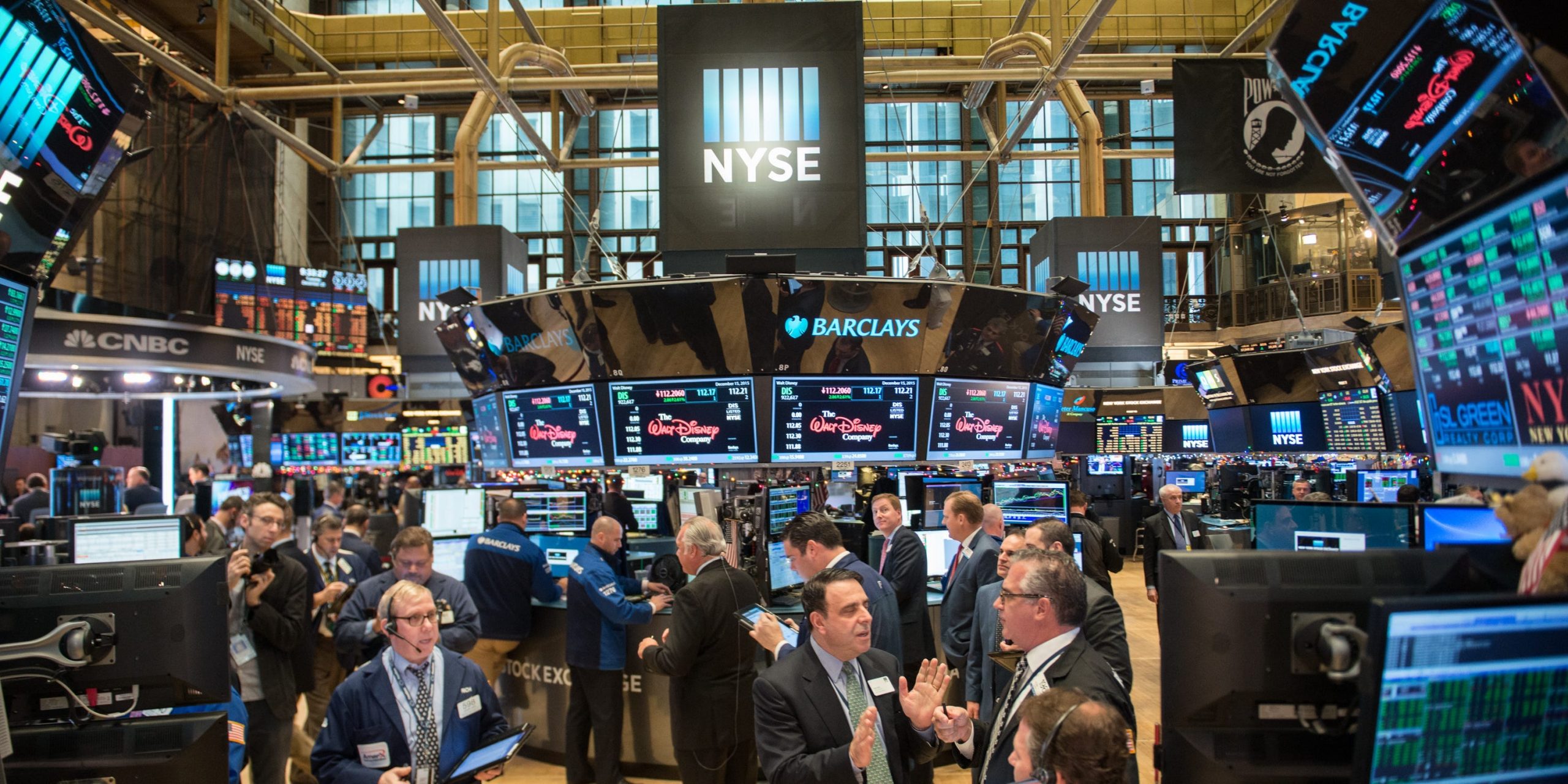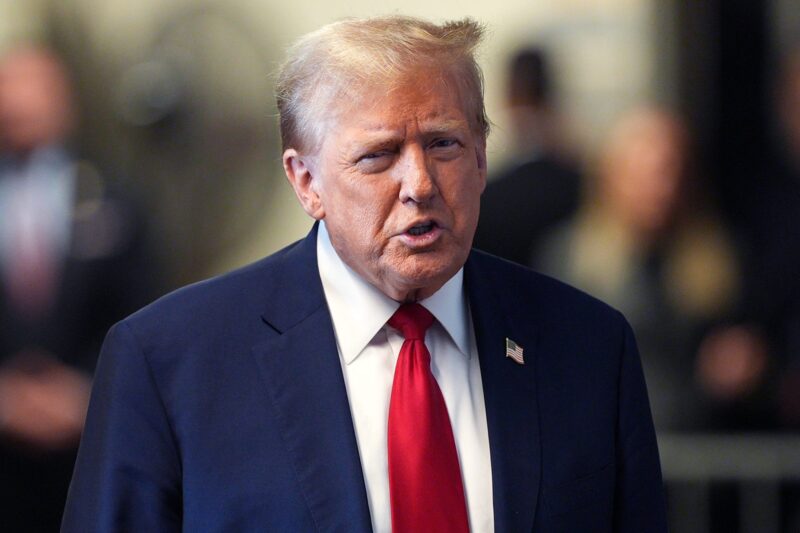
Lucas Jackson/Reuters
- The New York Stock Exchange (NYSE) is the largest stock exchange in the world.
- It is a marketplace for investors to buy and sell publicly traded stocks and securities.
- The NYSE uses an auction-based system that connects buyers and sellers either through electronic trading or physical floor trading.
- Visit Business Insider's Investing Reference library for more stories.
What do you picture when you hear the words "stock exchange?" If the words invoke images of busy screens and suits on a bustling trading floor, the reality of the New York Stock Exchange (NYSE) isn't too far off.
The NYSE is the world's largest and most well-known stock exchange, with a market capitalization of around $24.5 trillion. It's the trading home to some of the biggest companies, from prestigious blue-chip stocks to young and exciting high-growth stocks.
Understanding the inner workings of the NYSE can provide key foundational knowledge for investors.
What is the New York Stock Exchange?

Matteo Colombo/Getty Images
The NYSE – also referred to as the "Big Board" – is the biggest stock exchange worldwide based on the market capitalization of its listed securities. Formerly operated as a private organization, the NYSE is now a publicly traded company owned by Intercontinental Exchange Inc. It's ticker symbol is NYSE: ICE.
The NYSE's headquarters is located on Wall Street in New York City, which is home to the exchange's iconic physical trading floor. The NYSE provides a central marketplace for buyers and sellers to trade shares of stock in public companies – about 1.5 billion shares a day, to be exact.
The exchange lists many of the world's biggest companies, with sectors including technology, healthcare, energy, financial services, and more. In fact, you'll find that much of the S&P 500 and Dow Jones Industrial Average traded on the NYSE.
A brief history of the NYSE
The NYSE first opened on May 17, 1792, when a group of 24 stockbrokers signed the Buttonwood Agreement, a document outlining the rules and regulations of securities trading.
In the beginning there were only five listed securities compared to today's 2,300 counting. The Bank of New York was the first stock listed on the NYSE.
In 1971, the NYSE officially became a not-for-profit corporation, and officially transitioned to a publicly traded company in 2006, which is what it remains today. It's taken a series of mergers for the NYSE to garner the size and global traction it claims today. Among the most notable was its 2013 purchase by the Intercontinental Exchange Inc. (ICE), an organization that owns and monitors financial and commodity exchanges, in a deal worth $11 billion.
From stock market crashes dating back to 1929, to trading being halted for four days after the 9/11 attacks, the NYSE has faced many notable and historic challenges. In March 2020, the NYSE closed its trading floors and switched to all-electronic trading due to the coronavirus pandemic. To date, the floor remains only partially open.
How does the NYSE work?

Getty Images
The NYSE operates as an auction, with floor brokers setting the "bid" price, or the price they're willing to purchase a stock, as they buy shares on behalf of their clients. These clients can include banks, broker-dealers, hedge funds, mutual funds, day traders, and some high net-worth individuals.
On the other side of that relationship lies sellers, who submit an "ask" price that typically exceeds the bid price. Sellers are individuals or organizations that offer securities for purchase, like stocks, bonds, or commodities.
Then there are dealers, who serve as an intermediary between brokers and sellers, pocketing the difference between the bid and ask price as compensation for their work.
When a broker executes a selling order, it isn't complete until a dealer finds another broker to purchase the order. Because of the complexity of the arrangement, not just anyone can trade on the floor of the stock market. All parties involved are required to attain NYSE approval and carry a trading license.
Over time, the NYSE has evolved and modernized its trading environment. Up until about the 1980s, the NYSE relied on the boisterous open outcry system to communicate trade orders through verbal and physical signals such as hand signals and shouts.
Today, electronic trading is the norm on the floor of the NYSE. The "dealer" is a computer that automatically connects buyers with interested sellers, who each get updated information electronically. However, floor traders are still around to facilitate high-volume trades and set pricing live when necessary.
NYSE listing requirements
Before a public company can be listed on the exchange, it must meet a few stringent requirements. In terms of structural standards, all listed companies are required to have a minimum of 400 shareholders and 1.1 million outstanding shares.
Financially, listed companies must have a share price of at least $4, with the market value of its publicly held shares reaching at least $40 million. On top of that, there are also profitability standards that must be met.
Listed companies are required to earn at least $10 million over the past three years and maintain a global market capitalization that meets or exceeds $200 million.
NYSE hours
The NYSE operates daily from 9:30 a.m. to 4:00 p.m. ET, excluding weekends and public holidays, with extended trading hours trading available, too.
The NYSE is well-known for its opening and closing bells, rung at 9:30 a.m. and 4:00 p.m. respectively, to mark the start and end of the trading day.
These used to be rung by floor managers, but the tradition has evolved into executives from companies listed on the exchange coming to ring the bells daily, often in accordance with relevant marketing events or new mergers or acquisitions.
The financial takeaway
The New York Stock Exchange is the world's largest and most well-known exchange, facilitating between two and six billion trades per day. It operates following a complex auction-based system between three parties: dealers, sellers, and brokers.
Although the NYSE is a world-renowned exchange today, it's taken time and expansion to earn the reputation it's built.









